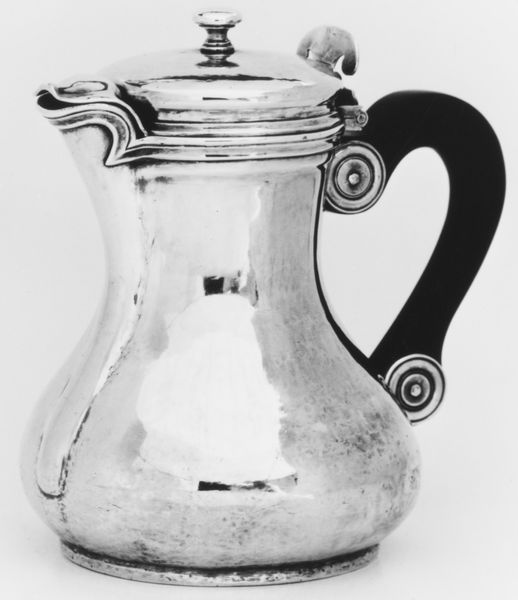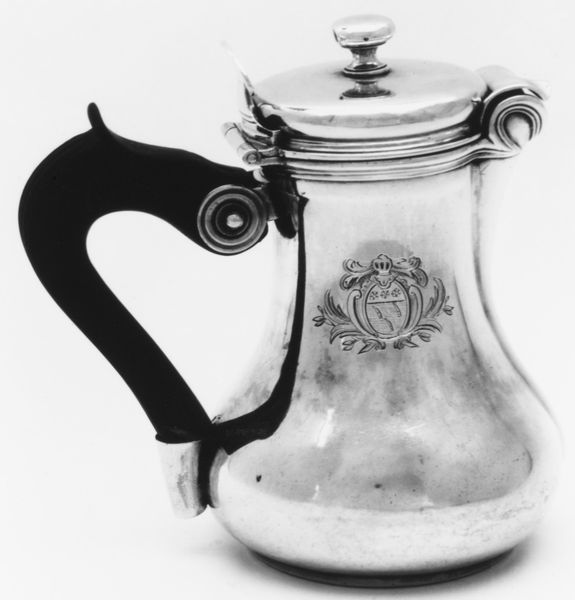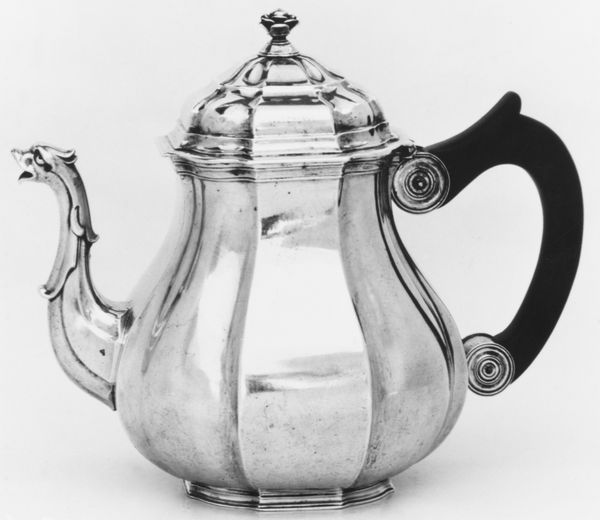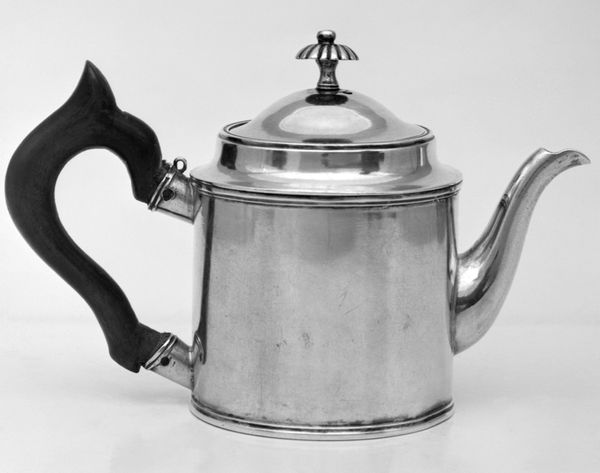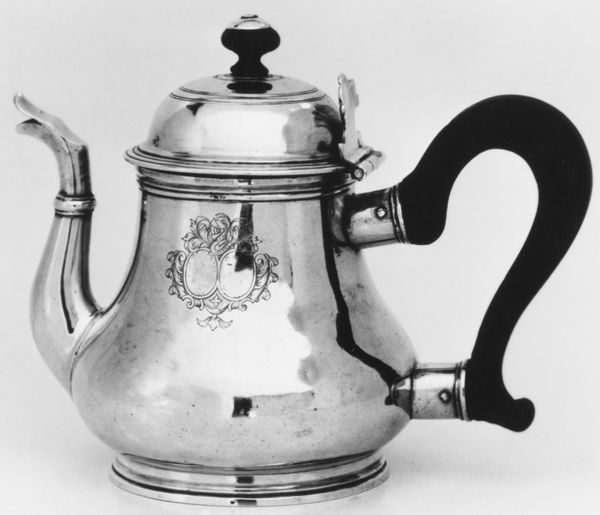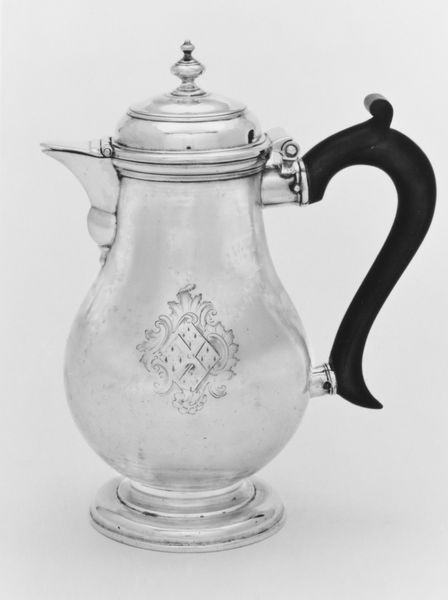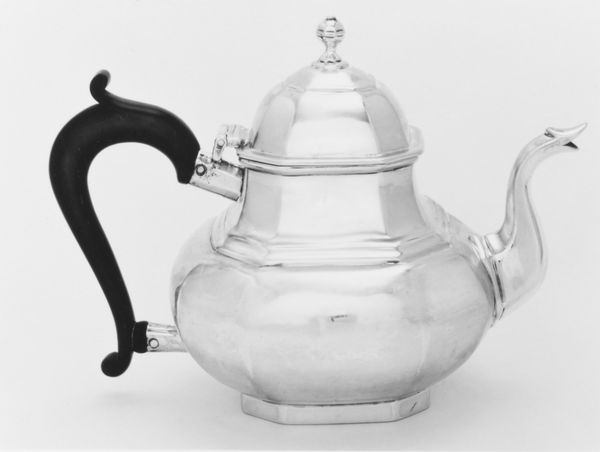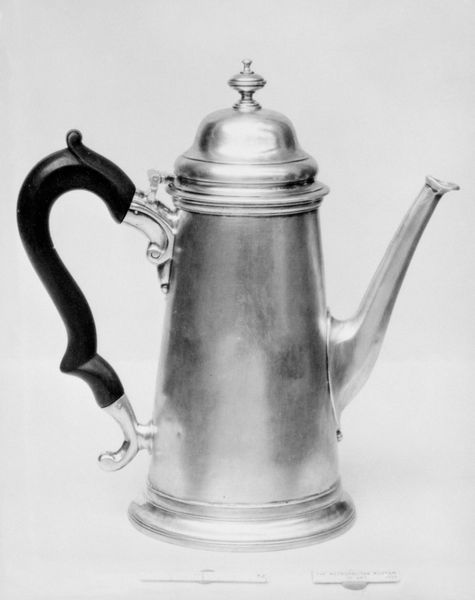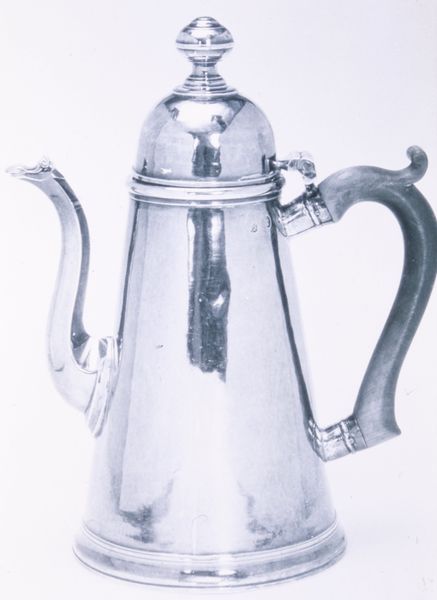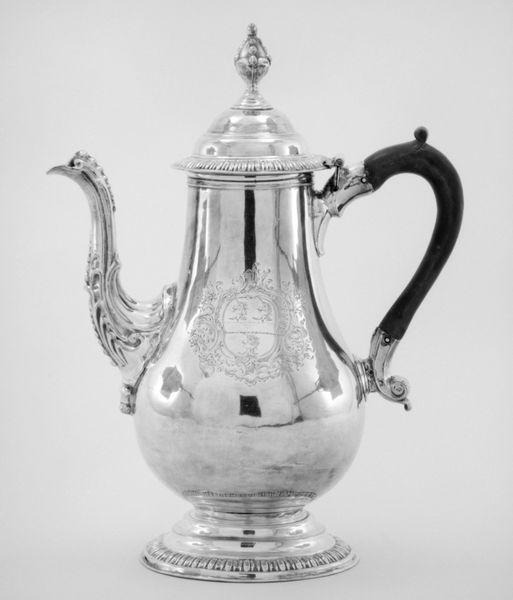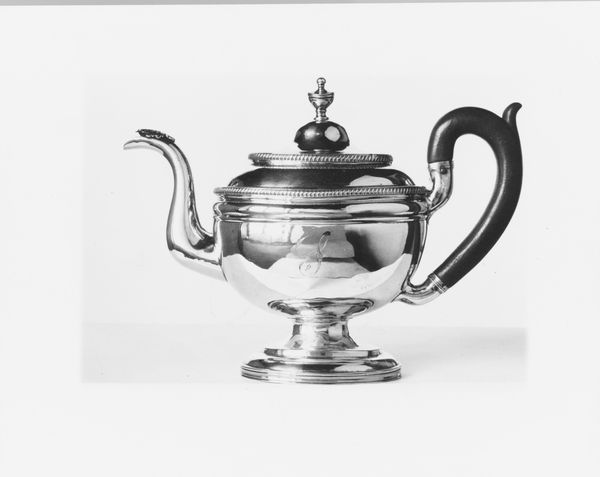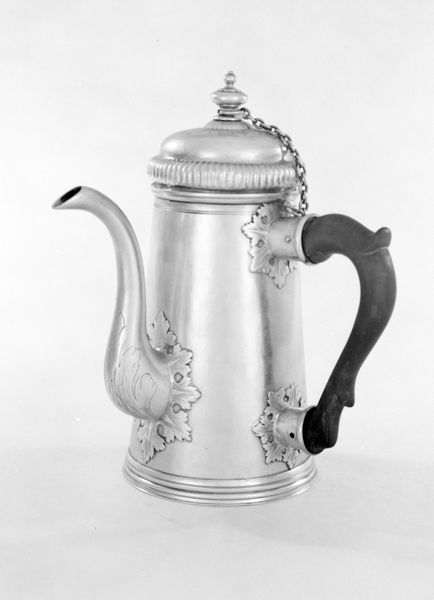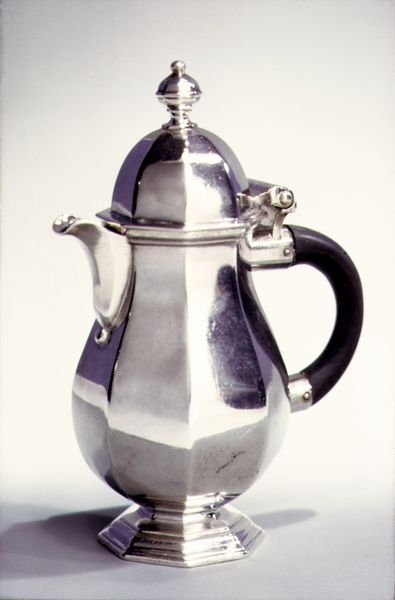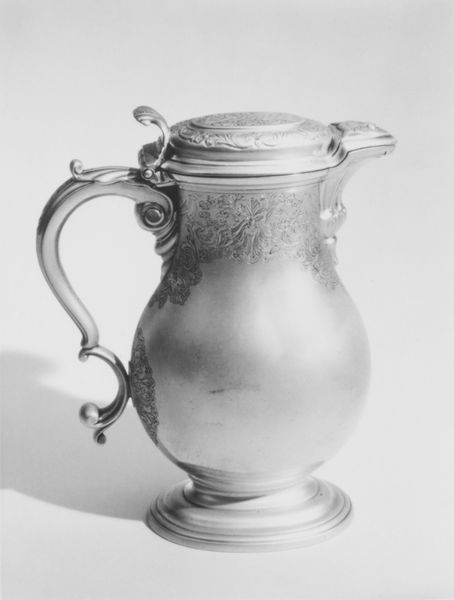
Dimensions: Height: 5 1/2 in. (14 cm)
Copyright: Public Domain
Editor: Here we have a silver milk pot made by Jean-Joseph Beaudet, sometime between 1786 and 1787. The contrast between the smooth silver and the dark handle is quite striking, and those leafy decorations feel… deliberately classical. What stands out to you? Curator: Looking at this, I see an object deeply embedded in the social rituals of the late 18th century. The Baroque flourishes, reinterpreted through Neoclassical motifs like those garlands, speaks to a very specific aspirational class. Editor: Aspirational, how so? Curator: Well, consider where something like this might be displayed. It's not just functional, it's meant to be seen, discussed. It projects a certain level of sophistication, a knowledge of history and current taste. Silver was relatively rare at this time. It acts almost as a status marker, doesn’t it? The decorative wreaths, so popular in that period, subtly communicated familiarity with wealth, art, and power, which aristocracy had at that time. Does that make sense? Editor: Absolutely! So, owning this milk pot wasn’t just about having milk, it was a way of signaling one's place in society. It makes you wonder about access to, and perceptions of art then versus now. Curator: Exactly! It's easy to forget that objects like these, seemingly simple in their function, carried complex cultural meanings, especially for the emerging middle class vying for social standing. Now art is far more open and accessible to all. Editor: This conversation made me reconsider how seemingly mundane items can be packed with political meaning! Thanks for shedding light on how social class affected artwork perception back then.
Comments
No comments
Be the first to comment and join the conversation on the ultimate creative platform.
